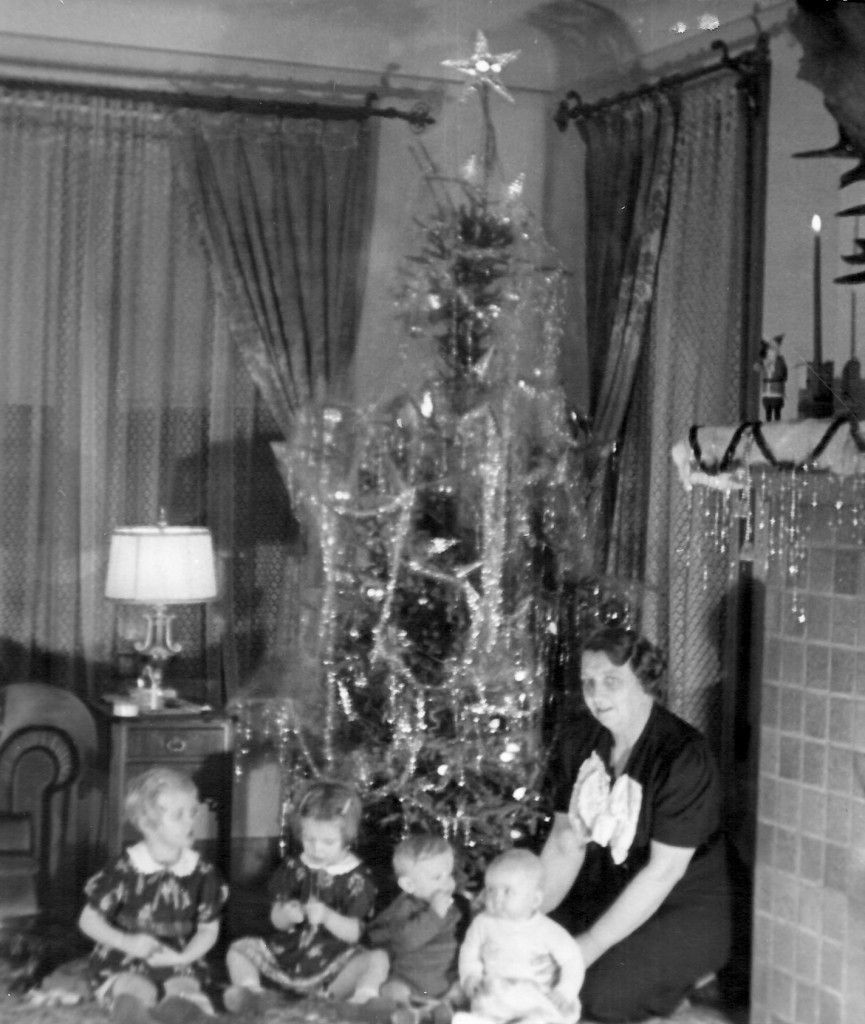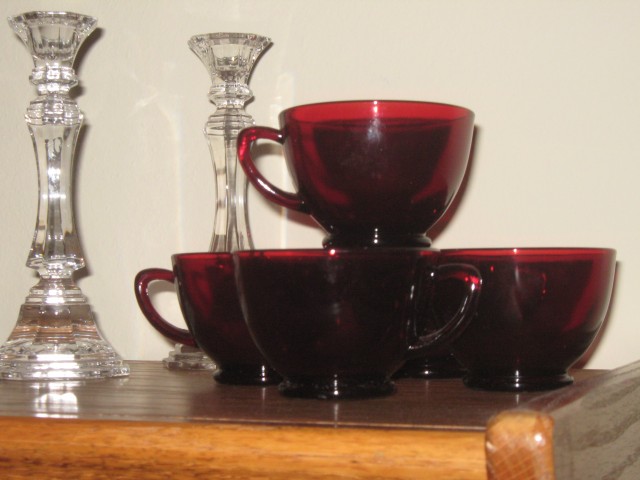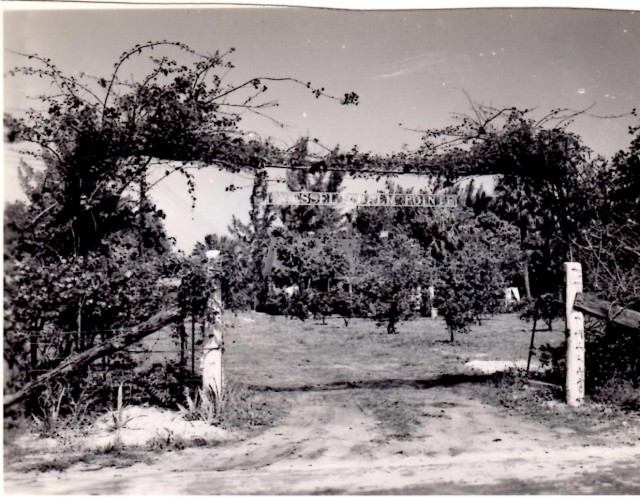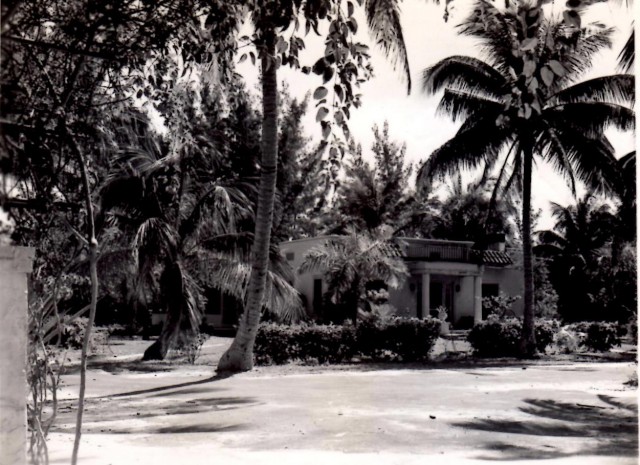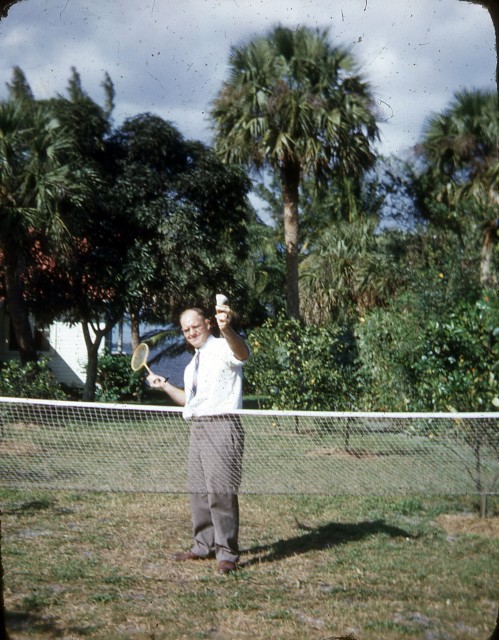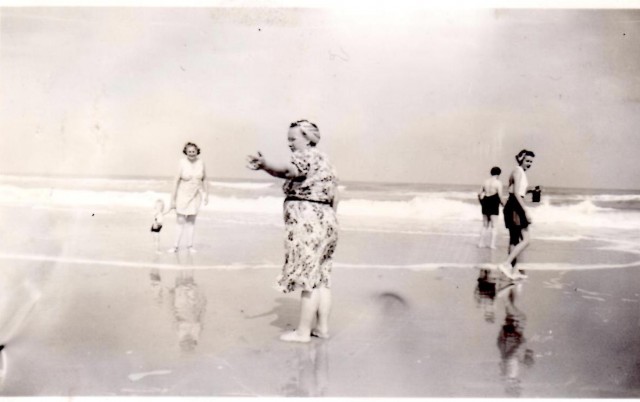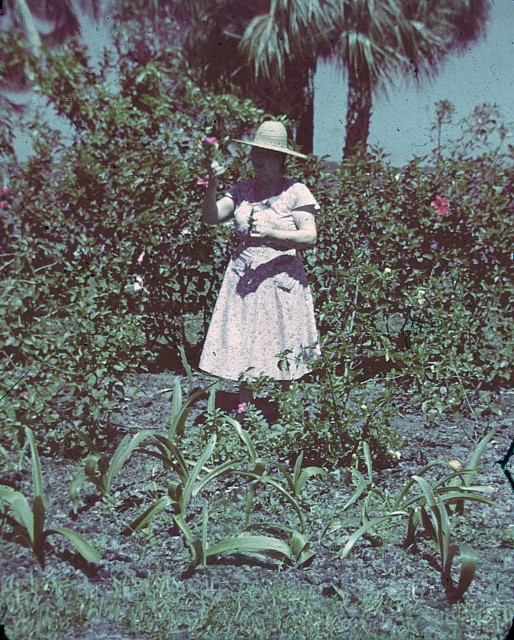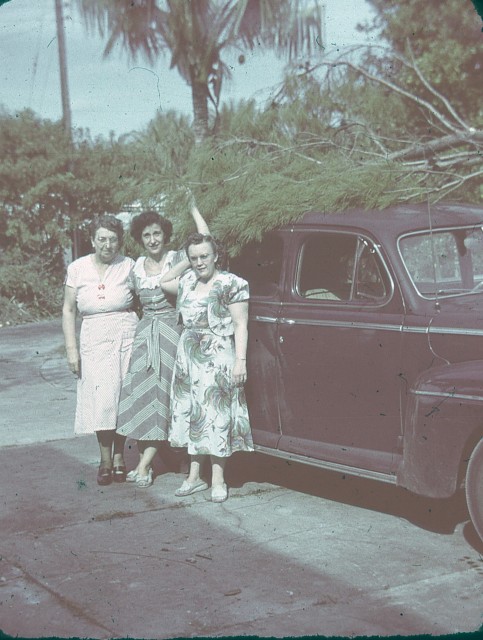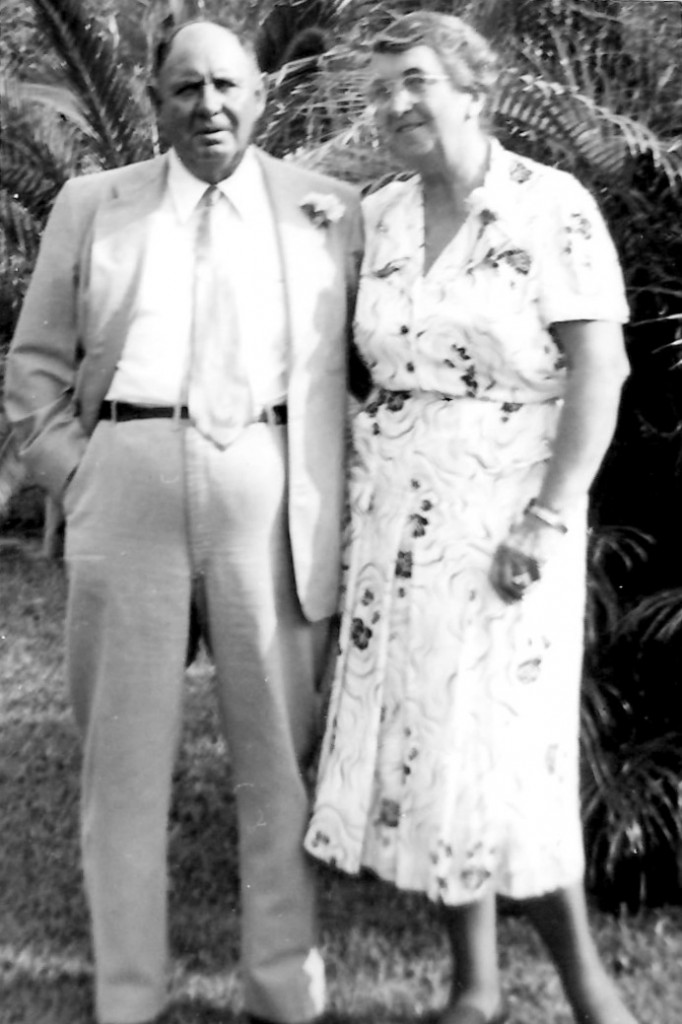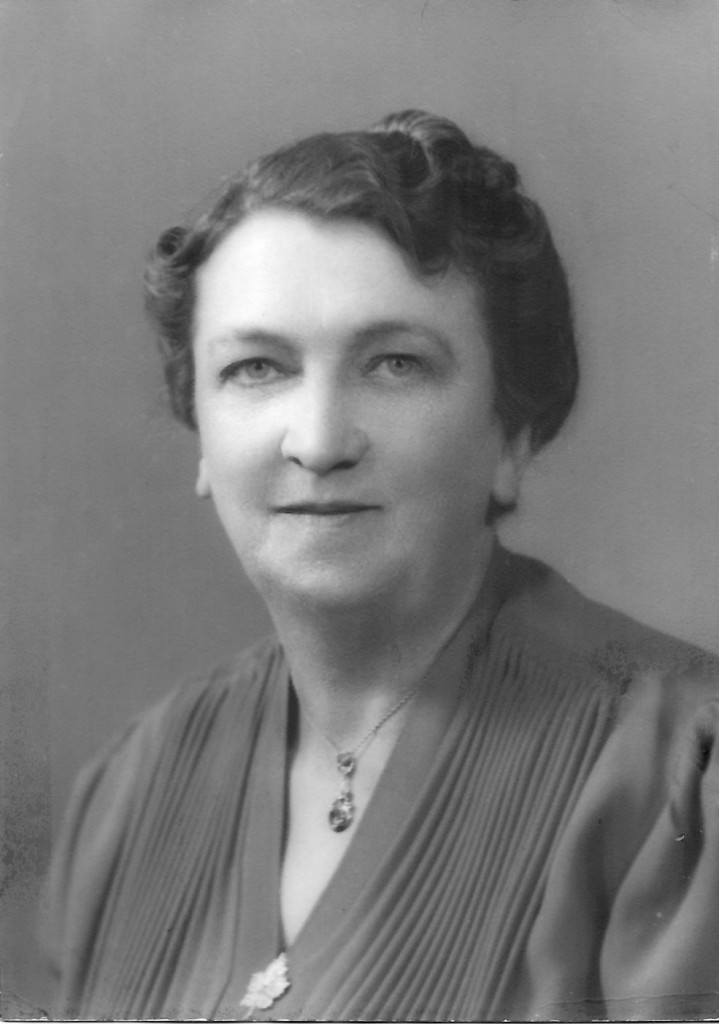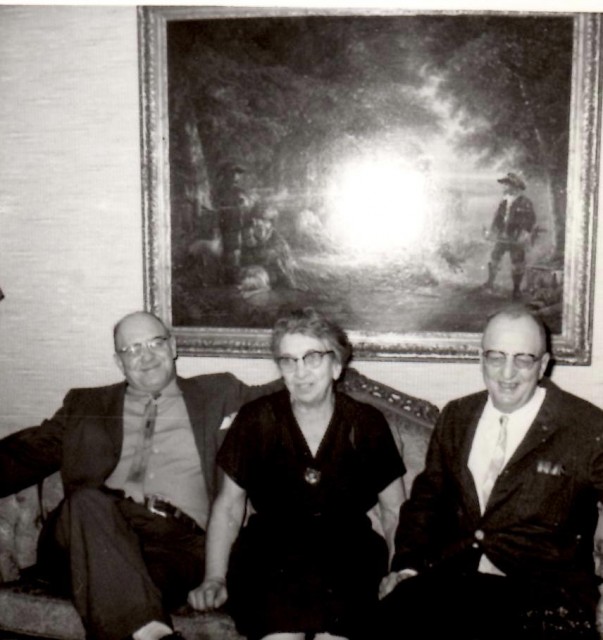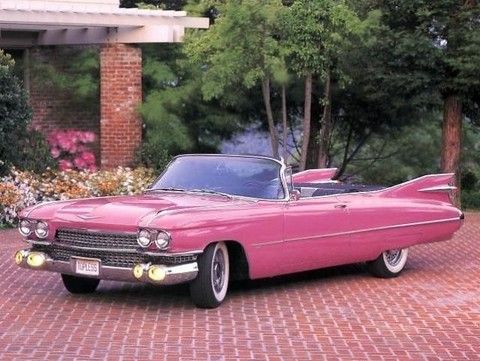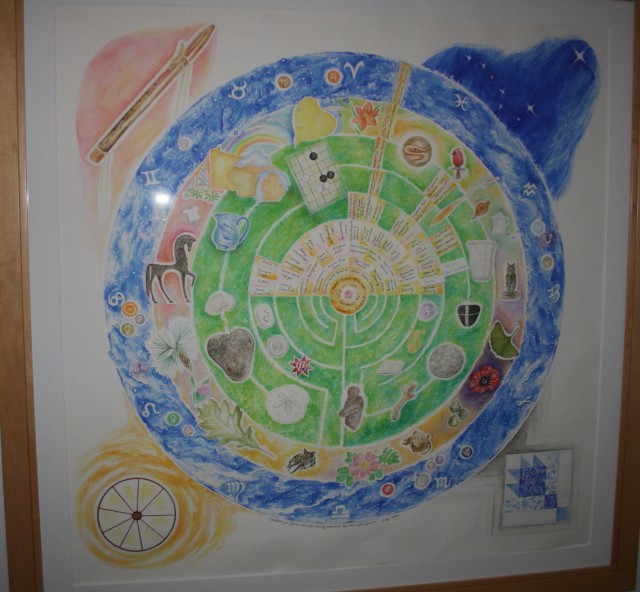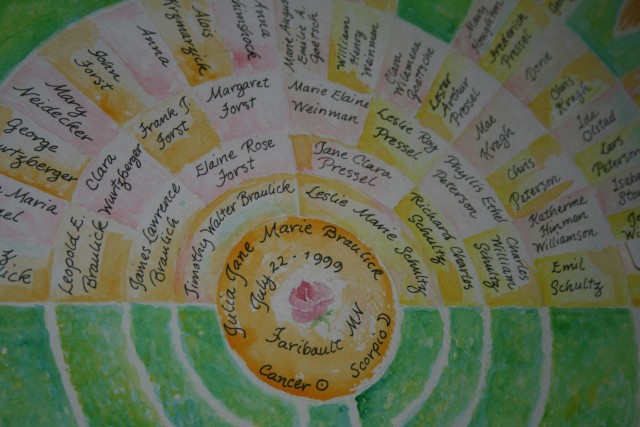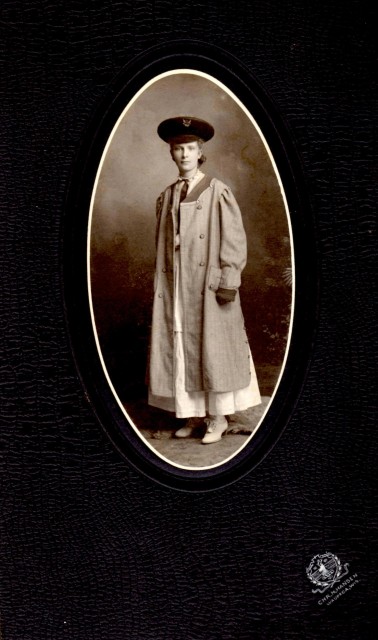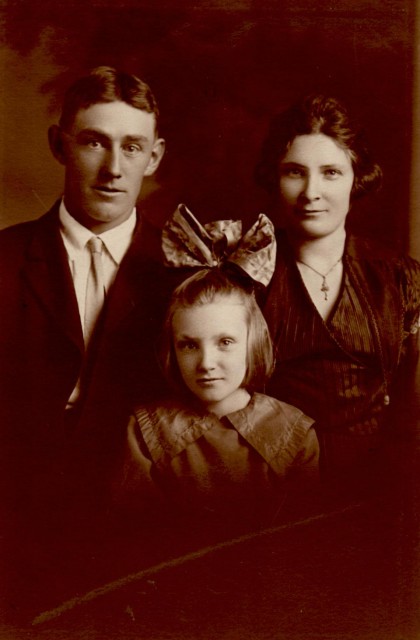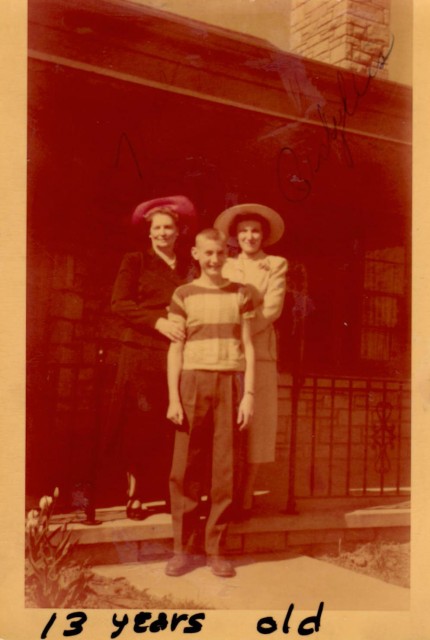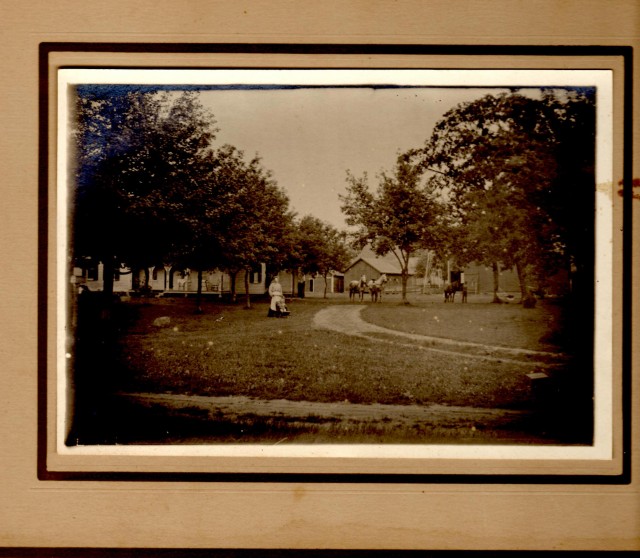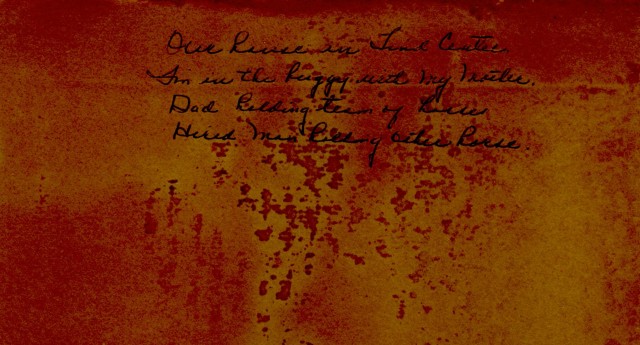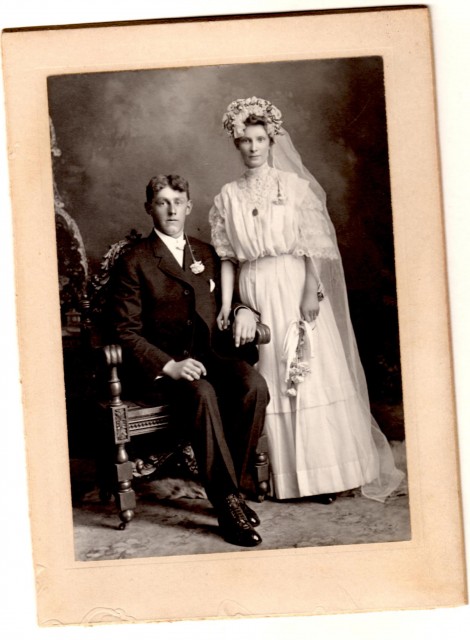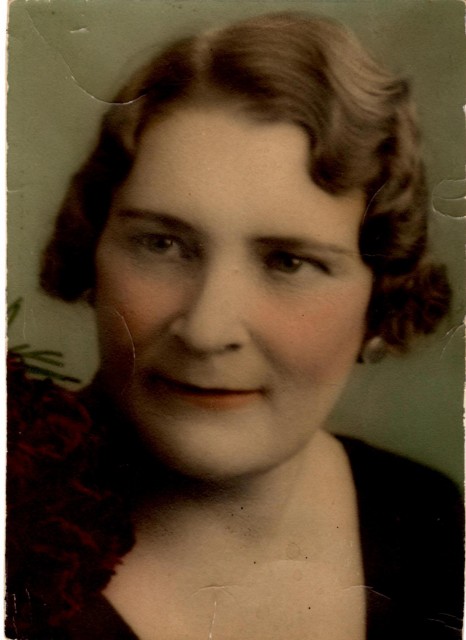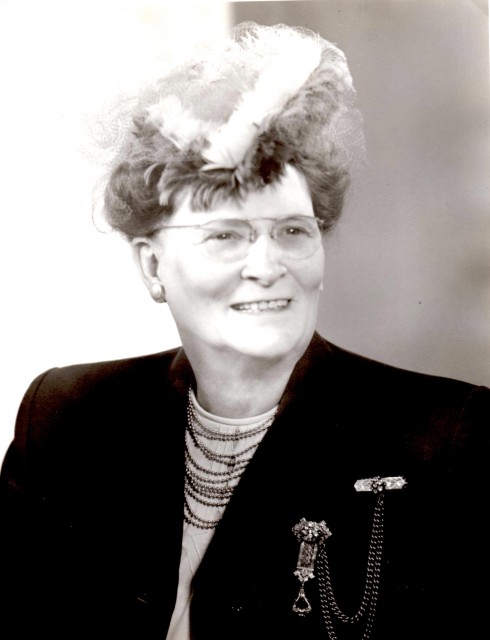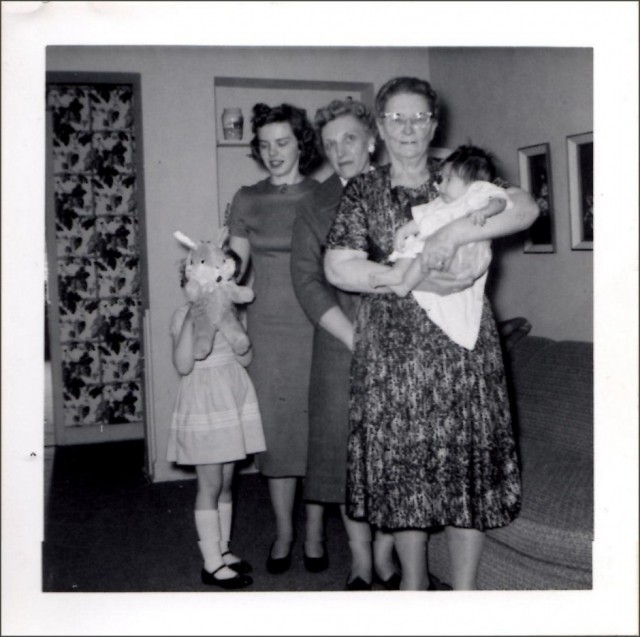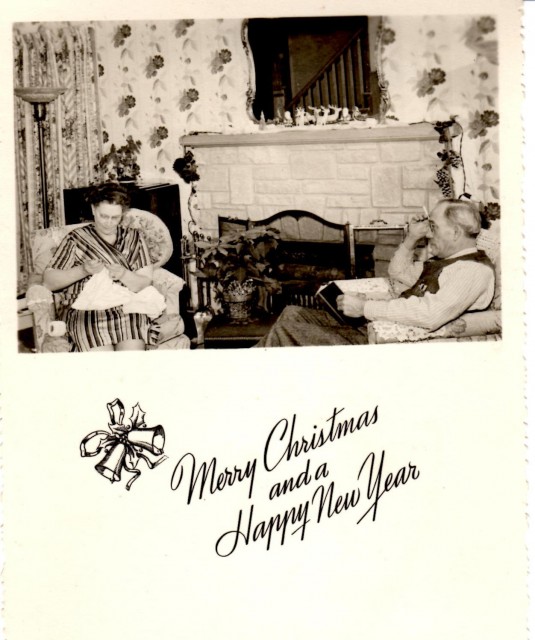CLARA
My mother’s grandmother, Clara Wilamena Goettsche Pressel, is less vivid to me than Mae (profiled last week) and also infinitely sweeter. I have no photographs of her as a young woman, and I suspect her beauty was always of spirit rather than face. The picture above shows her with four of her grandchildren (with my mother second from the left). When I married Tim I wore her aquamarine pendent set in gold (now belonging to my mother) – something old, borrowed, and blue.
I only have two direct memories of her and a few stories. I remember the dim light in her cavernous apartment in Grosse Pointe, Michigan. The rooms were large and well ordered, full of dark red, blue, and cream-colored Persian carpets and walnut furniture. She served milk to youngsters in the kitchen in red Depression glass which made the milk turn a pale pink. She loved butter, spreading it thick on crisp breadsticks. Her face was flat, plain, and broad, and her eyes were kind.
Her clothes were expensive but old-fashioned – even as a six-year-old, I could see that. In 1966, when the mini-skirt dominated the fashion horizon, she wore a navy blue dress that covered her fleshy arms and belly discreetly and hung within a foot of her beige orthopedic shoes. I have learned recently that as a hardworking young woman she helped to sew casings for the sausages sold by the family business, and that later she made many of her own clothes. I can’t help but think she took more enjoyment from sewing fine dress goods than from sausage casings, and as I look at photographs I think often of the Grant Wood’s painting, “Daughters of Revolution” (Cincinnati Museum of Art). My cousin from Cincinnati, who knew Great-grandma better than I did, keeps a large framed print of the painting in her house, and gave me some of the tea cups that Clara kept in her apartment.
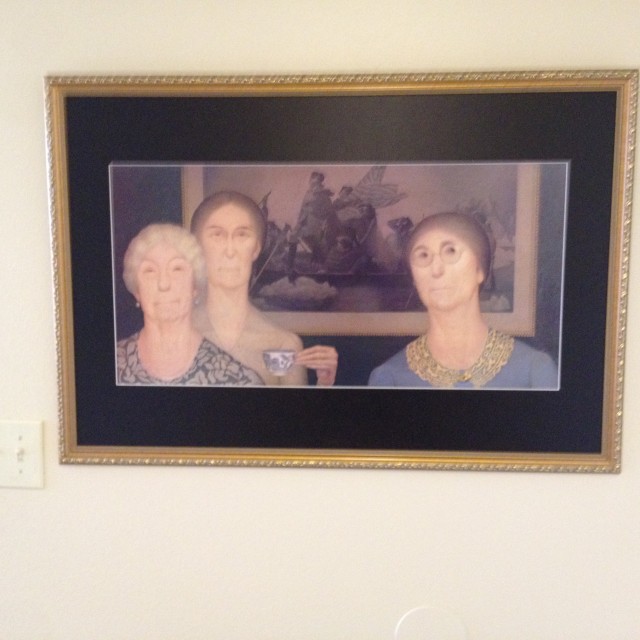
Print of Grant Wood’s “Daughter of Revolution”–original in the Cincinnati Art Museum (Photo by Carolyn Warden)
She had lived in that Detroit suburb for fifty years, with many weekends and summer days spent at the house on Cherry Beach on the shore of Lake Sainte Claire (the shallow stealth sixth Great Lake that connects Lake Erie with Lake Huron. Until the 1950s she spent winters on the water near Stuart, Florida. Her two sons, Kenneth and Leslie, were partners in her husband’s business. In the 1930s, they built a kind of compound on the then-rustic shores north of Palm Beach, with three airy houses, three ocean-going boats, three shiny Detroit automobiles.
I have one photo of her daughter-in-law (my grandmother, Marie) strolling along the beach with her sisters, a wide lady of German descent clad in voluminous bathing garb and a cloth turban to protect her permanent waves from the ocean breeze.
A variety of headgear was sported by Pressels in Florida.
Great-grandma was, by all accounts an active, practical, cheerful person who coped with what life brought–sole charge of a houseful of great-grandchildren stricken with chicken pox, for example. No need to call the parents when all that was needed was oatmeal baths. Sometimes she could be a little bossy (a by-product, perhaps, of being so capable?) but she didn’t strive to be the center of attention.
She reflexively did the generous thing: allowing her granddaughters to pick out any doll at Hudson’s toy department at Christmas time, deliberately cooking far more food than necessary for Sunday dinner so it could be packed up and sent home tactfully with young marrieds on a tight budget; driving out of her way home from a special bakery to deliver spritz cookies with dabs of red jelly in the center or birthday cakes with nuts; making her special, vinegar-and-bacon potato salad; pouring out the spicy (then local) Vernor’s ginger ale; enjoying Ritz crackers and ring bologna.
In researching this post, I learned that she drove a pink Cadillac with fins–and had rather a lead foot. For a significant anniversary (50th? 60th?) her husband brought her an enormous bouquet of plastic roses, saying he might not be there for the next one but at least she could enjoy the flowers forever. (She kept them on top of the television.), and that she told the younger people that at eighty it was great to be approaching middle age. She suffered from a heart condition, but, from all I know, there was nothing wrong with her heart.
The other memory I have of Great-grandma Clara is from a visit to her deathbed in April of 1969. She wanted to see my mother, Jane Clara, again. I was nine years old. Our family had flow to Detroit from the cool green coast of Oregon where we lived. We were met at the airport by Uncle Ken, who was my mother’s uncle and Clara’s oldest son. He was the head of the family businesses and had taken care of his mother’s affairs for many years.
It was brisk in Detroit. I wore a pale pink wool coat with white piping and white gloves. The snow cover was gone but the grass was still dormant. I felt as obvious as an Easter egg in that brown landscape. We drove straight to the hospital. My brother, sister, and I waited in the car with Dad while Uncle Ken took Mom up to see her grandmother. He returned to the car with an unheard of treat – a chocolate Easter rabbit for each one of us. Mine lay in its container of cardboard and cellophane like Snow White in her glass casket. As I removed it, it seemed to wink at me. I bit off its head, then discovered the head was hollow. Chocolate shards dusted my coat. I kept eating. Later, I felt sick.
The next day, against hospital rules as I was only nine years old, I was taken up to see Clara. She lay on the narrow bed, clearly very tired, but smiling. She reached out her hand and I took it. I sensed weakness and turmoil, and I wished somehow to ease her heart, but I didn’t know how. I was glad Mom was there, because she always knew what to do. What was most vivid to me was Clara’s aura of kindness.
Thirty years later, I learned that Uncle Ken had taken Clara to a lawyer’s office on the way to the hospital. There he had had her sign a revised will, rechanneling the primary assets away from our branch of the family to his own grandchildren, who had been recently orphaned. Clara died soon after we returned to our own coast. Those beautiful Persian rugs were disposed of at a garage sale, perhaps the artificial roses, too.
In the years between then and now, Clara’s sweet nature has become a legend. I think of her often. I wish I had a few more memories of her, had had more time with her. I hope she died with a peaceful heart. If there is a heaven, I like to think of her tooling around it in a shiny pink-finned vehicle, the back seat filled with grandchildren, boxes of cookies, and heaps of flowers.
Thank you for reading this! If you think of someone else who might enjoy it, please forward it to them. And, if you are not already a subscriber, I invite you to subscribe to the Wednesday posts I am sending out each week–it’s easy, it’s free, and I won’t share your address with anyone!

